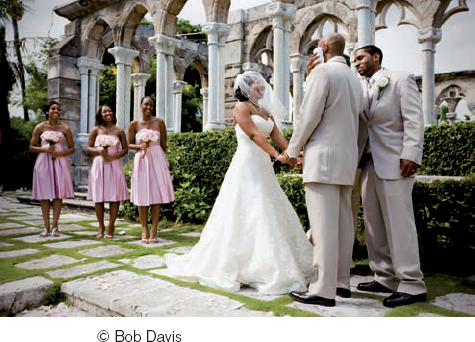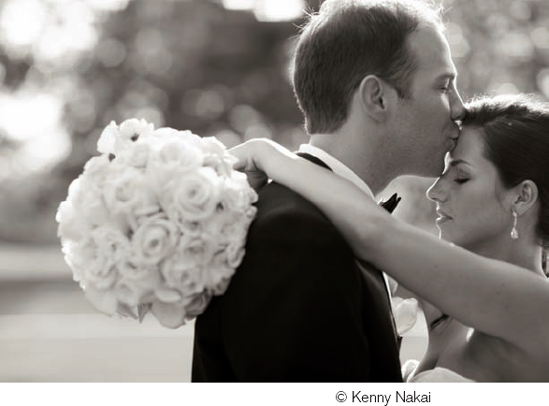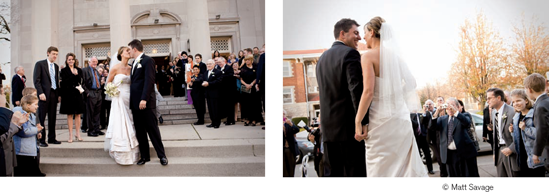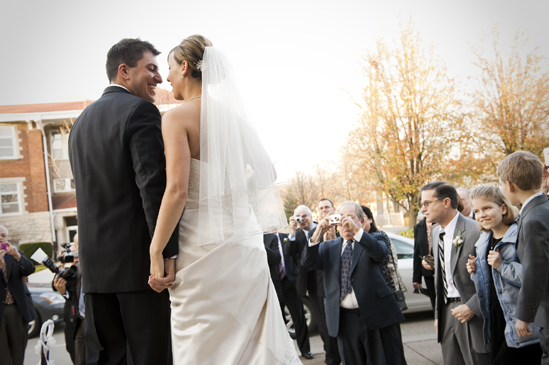Weddings are busy, fast-paced, and can be very difficult for one photographer to cover alone. For that reason, I offer my clients the option of having a second or even a third photographer at the event. While having another shooter helps make sure all aspects of the wedding are covered, it's important to remember that an assistant or a second shooter acts as an extension of you. All their actions and behaviors are your responsibility and a direct representation of you. Choose who you want to represent you carefully, and make sure they are as friendly and courteous as you yourself would be.

When working with other photographers it is imperative that you discuss roles and expectations before the event. A second shooter should know in detail what they are supposed to do and clearly understand what you expect from them. For example, one thing I always ask of the photographers working with me is to be mindful of where we are positioned so that we do not get in each other's photographs. When there is more than one photographer covering an event, it is nearly impossible to avoid capturing the other photographer in at least a few shots. By letting them know my preferences, we can minimize the number of times this happens.

Some photographers use an assistant whose main role is not to photograph, but to help with other various tasks during the wedding day. This includes hauling gear, setting up lights, anticipating the photographer's needs, organizing memory cards, lenses, cameras and basically trying to make the photographer's life as easy as possible. Many times the assistant will help get people ready for the portraits as well as take care of anything else that comes up.

Being an assistant is not the most glamorous job in the world, and most aren't paid for their role. Their compensation consists of the experience and guidance they receive during the shoot. When an assistant works with me, I share with them how I shoot a wedding, set up the portraits and interact with the clients. They need to be professional in both attitude and presentation. Even though the assistance isn't paid, I still make sure his or her incidental expenses like travel, lodging and meals are covered. The job is supposed to be a learning experience, not something that will cost the assistant any out of pocket expenses.
Even though it is not their main role to take photographs, it's a good idea for an assistant to carry a camera during the wedding. Shooting a few images represents a great educational experience. Just remember that if you give your assistant a special assignment or something to cover during a wedding, and it does not get done properly, you cannot blame anything on him or her. In the end, as the hired photographer, the responsibility lies entirely on you to get the job done.
Second or third shooters help cover the event by shooting at the same time as I do. I work with photographers I know and trust. As I mentioned in Chapter 12, most times these second or third photographers are other wedding shooters who also use me as a second shooter at their weddings. I know how they work and they know what I expect.
I like to give the second shooters I work with the freedom to shoot the wedding as they see fit. I choose to work with them because I like the way they work and the images they capture from their own perspectives. At the same time, I do make sure the second shooter is aware of my expectations and I occasionally ask the second shooter to cover specific events during the wedding.
When the bride and groom are getting ready at the same time but in different locations, I usually spend the time with the bride while the second shooter is off shooting the groom. If time permits, we will switch and take turns covering both the bride and groom.
When the bride is walking down the aisle, I am the one shooting the bride's face and her reaction and the second shooter concentrates on the groom. Since it is practically impossible to catch both reactions, it's important to know ahead of time who will take responsibility for capturing each response. A third shooter will sometimes be positioned behind the bride as she walks in to capture the angle from another perspective while making sure not to get in the shots of the lead photographer.
During the ceremony I ask the second shooter to concentrate on the crowd and the wider shots of the church while I am focused on the wedding party.
When there are toasts, I usually concentrate on the person making the toast and the bride and groom and the second shooter captures other guests' reactions. Or he or she focuses on the person making the toast and I focus on the couple.
The goal of the second shooter is to complement me as the primary shooter and cover what I can't. For example, if I am shooting with the wide angle lens, then I want the second shooter to be shooting with the telephoto. He or she needs to be covering my blind side and act as the eyes in the back of my head.


Even if you are working with photographers you trust or like their style, it is a good idea to have a general agreement established before the shoot so there are no misconceptions. It's a good business practice to draw up a second shooter's agreement and have an attorney review it. This will save lot of headaches in the long run.
I enter into a contract with the other photographers who work with me either as assistants or as extra shooters to establish and confirm expectations right from the start. The contract spells out the hours they are expected to work along with when I expect to receive their images and in what form. The contract also spells out what they will be paid and when.
One of the most important parts of the contract stipulates how images taken by the assistant and other shooters can and can't be used. The actual photographer always holds the copyright, but I control the rights and usage of the images. Images usage stipulations include:
Can be used in the photographer's online portfolio to promote their work
Can use the images in their blog AFTER it has been blogged by the lead photographer and the blog must mention that it was photographed for another lead photographer
Not to be entered in competitions unless it was a shot the photographer setup and created instead of the shots he or she photographed while the main photographer was setting up the shot
Not to be submitted for publication or feature editorial
Not to be sold to clients or vendors separately
Images photographed by the second shooter will remain copyrighted under the main photographer's business
Cannot create their own Facebook or other online gallery and request friends or "tag" them (a system to notify the guests of their images being published online)
Do not establish and or initiate contact with the client/vendor for business reasons during and after the wedding. In the event the client/vendor contacts them, the second shooter will refer them back to the main photographer
Agrees to represent the main photographer's business on the day of the wedding and not promote their own business. If a client or vendors requests a business card, that of the main photographer will get handed out
Agrees to turn over all digital files/images after the event, preferably at the event or as soon as possible after the event
Agrees to keep a backup copy of all their images until I confirm I have backed up all their files
